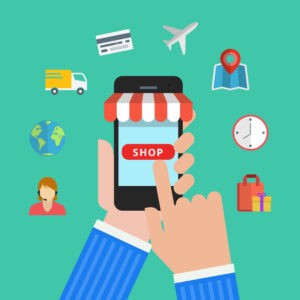Today, buyers have a multitude of information at their fingertips. Because of this, the buyer’s journey has changed.
Consumers are no longer driving to the mall to buy new boots or heading to an electronics store for a new TV. They are instead conducting research, reading reviews and searching for the best deal online.
As people change the way they conduct their lives, marketers need to adapt to their lifestyle to make an impact. This is where lifecycle marketing comes into play.
What is lifecycle marketing?
Lifecycle marketing is a type of marketing that encompasses the entire customer journey, hence the name “lifecycle.”
With this type of marketing, customers receive a personalized experience. The type of marketing they receive is based on their specific timeline. For example, if your business is a clothing store for women and a customer hasn’t been online for some time, then you can send an offer for an extra 10 percent off.
Quick links – Mobile Coupons – What We Do – Pricing

Lifecycle marketing is designed to increase retention with customers by continuing to communicate at the right time.
Phases of lifecycle marketing
Before we dive into one key piece of lifecycle marketing, let’s talk about the phases customers typically enter.
First, companies need to create awareness about their product. This could happen from ads on the product on websites where the demographic is searching. Next, there is a buildup of interest and intent. The consumer is aware of the product and is conducting research, reviewing the ads, blogs, or browsing the website. Once this phase passes, the customer decides on the purchase and officially becomes a customer after buying the product or service. Once the consumer makes a purchase, the communication is not over. Ideally, you want the consumer to become a loyal customer who will make repeat purchases and recommendations to friends. In this phase, you should continue to nurture the customer. This may look different for various types of businesses. For example, a business to business company may continue to nurture the customer with industry-related content or updates on new features. A business to consumer business may send emails on the latest collection if it is a clothing business, a new restaurant menu item, or a coupon to get someone back.
Lifecycle marketing on mobile
As we mentioned, consumers have changed the way they make purchases. That is partially because of mobile devices. While the purchasing journey may be similar, marketers just need to consider the different places to communicate with customers. Before, email may have been the primary to keep in contact with customers, but now you can reach them via text or ads on apps, websites and other places as well.
Placing this into the phases, you could create awareness by targeting consumers based on their interests. For example, if your business is an electronics store then you could advertise to people who read about the latest televisions or computers online. You could advertise your selection of gaming laptops to gamers. You could also create a geo-fence which is a virtual perimeter around a specific location to show ads to create awareness about your store to potential customers nearby or even at a competing business. Along with ads, you could send text messages to consumers as well. If we take the example of the electronics store, then you could send text messages to prior customers with a coupon for 10 percent off or an invitation to check out the latest game.
When you combine your lifecycle marketing strategy with mobile or web-based marketing, then you will have a great opportunity to not only attract new customers but create a group of loyal customers as well.

